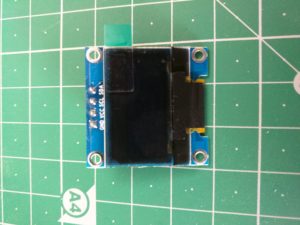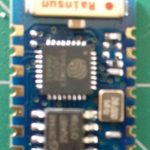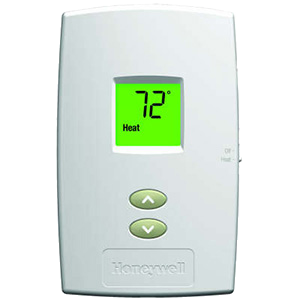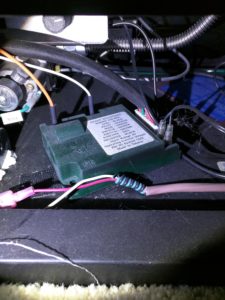
OK, this should be an easy problem to solve right? So, first, lets understand how it works. First, whats behind it? Well, the backplate has 2 wires connected. So its not suitable for a Nest or an Ecobee (no 24V, no common).
OK, what do those give? The meter shows 4.2V @ 1mA. If I short the two terminals, the fireplace turns on. 4.2V sounds good, but 1mA is not good enough (I guess I could do some sort of harvestor and Li-ion battery, but we’d have to charge it at less than the 1mA to prevent it from turning the fireplace on, and, well, that might be tricky to achieve and slow).
Lets look underneath. We have a gas inlet, a gas pressure regulator/switch, a thermocouple (thermopile?), a tiny power bar, and a 3V AC transformer. And, more interestingly, we can see the (brown) thermostat cable, with two unused wires (black/green). So, I think we can send power to the thermostat pretty simply, a 5V USB wallwart should do nicely, tie to the black/green wire.
The fireplace is a heat&glo SL-750TR-IPI-E
OK, next, lets look at how to make this look nice and work well.

We’ll need a temperature sensor. For this I can use either a Dallas Semiconductor (Maxim) DS18B20, using 1 GPIO pin, or a module like the DHT22/AM2320/AM2302 temperature/humidity sensor (also using 1 wire).
I might also want to use a Li-Ion battery and charge circuit, so that the fireplace can operate when the power is out (its one of the aux heat sources in the house, along with a pair of D-cells that run the fireplace bits and go super crusty/leaky if you are not looking!)

OK, now the theory would be: we let the ESP 8266 run the local logic. Measure temp, if temp < set point then turn on. If temp > set point + hysteresis, turn off. We then allow the set-point to be manipulated via MQTT (as well as reading the room temperature because ¯\_(ツ)_/¯).
We’ll do a bit of a de-bounce in software for the two front-panel switches, having them control the set-point (and broadcast this over MQTT of course). Then it will be a simple matter to hook it into Home Assistant.
OK so this is super-simple. USB 5V DC wall-wart, Li-Ion charger/3.3V supply module. ESP8266. 4k7 resistor, NPN transistor, Li-Ion battery, OLED display. Total BOM cost about $6. Probably take about 100 lines of C and a few hours to debug. Time to go scrounge the parts box to find the components. I’ll race you!




Leave a Reply